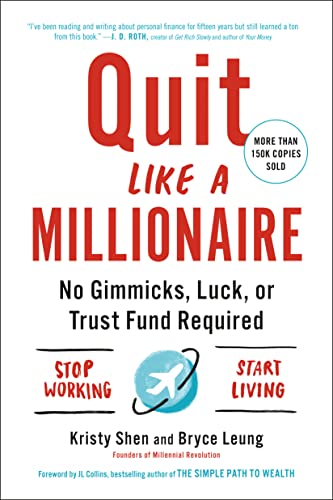The 40 Best Personal Finance Books
By Maude Gauthier | Fact-checked by Lois Tuffin | Published on 23 Apr 2024

Reading ranks as one of the most popular hobbies in Canada with more than half of Canadians claiming to read between 1 and 5 books per year, some people reading up to 50. It’s a habit that many successful people keep throughout their lives. According to reports, Microsoft founder Bill Gates reads about 50 books a year. Meanwhile, Warren Buffet, one of the world’s most successful investors, reads about 500 pages a day.
In this article, we’ll have a look at the best personal finance books. Most books are written by Canadian authors, to ensure they suit the Canadian market. While personal finance doesn’t change much based on your location, examples and investment tips provided by foreign authors may not work for Canadian investors. However, we included a few books from elsewhere when their teachings can be applied more generally.
1. Quit Like a Millionaire: No Gimmicks, Luck, or Trust Fund Required
Quit Like a Millionaire, penned by Canada’s youngest retirees, Kristy Shen and Bryce Leung, is hands down the best personal finance book in Canada. It speaks in particular to Millennials and younger generations. Much more than a sassy page-turner, this memoir serves as a practical guidebook with a step-by-step. As such, it gives a no-BS approach to managing money, building wealth and achieving financial independence.
Kristy and Bryce dig into Canada’s tax, retirement and investment system. They frame their lessons around RRSPs, TFSAs and financial tools that give you simple, actionable strategies to use right now. In short, you cannot afford to skip this must-read.
Its witty and thought-provoking take on a financial counter-culture called FIRE (Financial Independence, Retire Early) sets it apart. Chronicling their journeys from childhood poverty to self-made millionaires in their 30s, Quit Like a Millionaire hits home. It speaks to the power of frugality and intelligent investing. Further, it delves into the importance of understanding your financial habits and mindsets.
2. Stop Over-Thinking Your Money! The Five Simple Rules of Financial Success
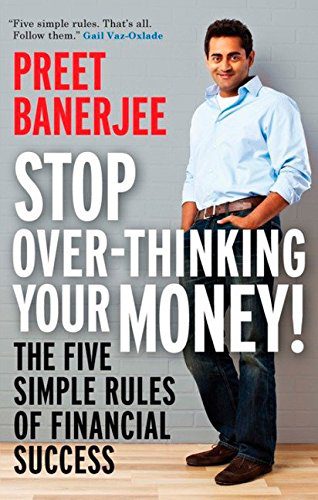
Written by Preet Banerjee, Stop Over-Thinking Your Money! scored 3.8 on Goodreads with some very good reviews. As one of the hottest-selling personal finance books in Canada, it suits readers who don’t know much about personal finance. For instance, it skips over different buzzwords and concepts for clear comprehension.
Founder of MoneyGaps.com, Banerjee has experience working as a columnist and wealth management consultant. He understands the types of issues new investors face and has done a good job of covering concepts in simple words. His conversational tone makes it easy to complete this 224-page book that was originally published in 2014.
Banerjee provides some concrete advice in the book and we also liked the use of his personal stories. However, remember that this book wouldn’t fit someone who already understands personal finance and complex investing. This can serve as a stepping stone before moving to more detailed books.
3. Millionaire Teacher: The Nine Rules of Wealth You Should Have Learned in School
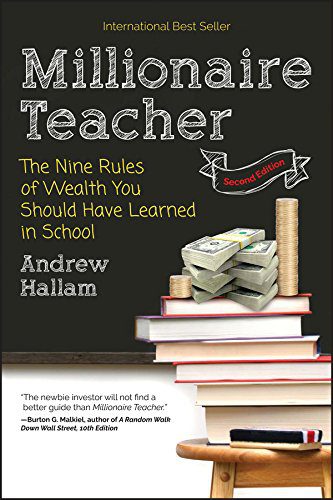
Andrew Hallam believes that schools today don’t teach enough about personal finance and he appears to be right. Once you go through Millionaire Teacher: The Nine Rules of Wealth You Should Have Learned in School, you will realise how much you’ve missed. This 256-page book might not weight as much as some other top personal finance books. However, it gets the job done as Hallam wastes no time getting to the point.
This book flows very well with simple yet crisp language. Just like our previous pick, this one also serves as an introduction to investing yet has some very detailed portions.
Published in 2017, the book has key anecdotes and some extreme examples, such as biking 70 miles a day. Above all, this book is specifically written for Canadians, linking to organizations and tools designed for Canada. The book also highlights the benefits of investing in Canada.
Unlike some other personal finance books, this one isn’t just address the good things. Hallam fearlessly speaks the truth about why Canadian mutual funds do not make the best option and why it takes a while to learn the art of investing.
4. Money Like You Mean It: Personal Finance Tactics for the Real World

Going through Erica Alini’s Money Like You Mean It: Personal Finance Tactics for the Real World will not make you rich overnight. However, it can help you understand how personal finance works and what you can do differently to achieve your goals. While not the most famous personal finance book out there, it deserves more attention.
A journalist by profession, Alini understands personal finance well and has covered a wide variety of topics in this 256-page book. Released in 2017, it provides actionable tips on achieving financial independence through smart investing. The book teaches investors to make money in less time. That makes it a great option for people who are too busy to spend hours keeping an eye on their investments.
In one interesting and very relevant section, Alini talks about buying versus renting. She looks at everything from a critical perspective and informs people so they can make their own decisions. She also covers common terms, tips on finding the right financial advisor and insights on avoiding scams. Overall, Alini has done a good job of preparing people to take their first step towards investing.
5. The Wealthy Barber Returns
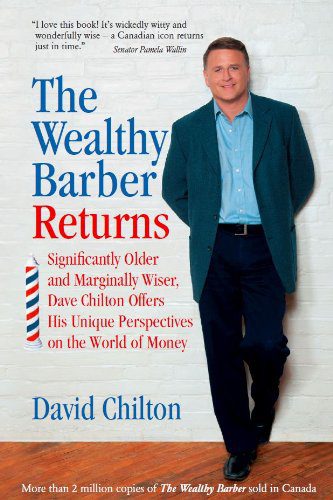
Don’t let the title fool you, The Wealthy Barber Returns by David Chilton remains one of the best Canadian personal finance books. It even has a 3.9-rating on Goodreads. Originally published in 2011, the book seems old but not dated. Plus, you can buy it as an audio CD.
Consider this as a book written for people who already understand personal finance and know the language. If you are new, then start with one or more of the three books covered above. Once you’ve gone through those, you can better comprehend this narrative.
We liked the flow of the book and how Chilton has organized the chapters. While short, they contain excellent examples and actionable advice. You will also find some calculations that clearly explain complicated concepts.
Unlike some other books, you won’t describe this as dry or verbose. Rather, it entertains as it reads like a suspense novel. Chilton does a good job of highlighting the importance of savings, Similarly, he answers questions the common person may have including a comparison of different account types.
Note: This sequel builds on lessons from Chilton’s original book entitled The Wealthy Barber: The Common Sense Guide to Financial Planning.
6. Wealthing Like Rabbits: An Original and Occasionally Hilarious Introduction to the World of Personal Finance

Robert R Brown gave us Wealthing Like Rabbits: An Original and Occasionally Hilarious Introduction to the World of Personal Finance. He wrote this 216-page book for Millennials. In it, the author use pop culture and relevant anecdotes to help readers understand different personal finance concepts.
The book covers a wide range of topics, including debt repayment, opportunity cost, credit cards, investment accounts and mortgages. A personal finance speaker and author, Brown seems to have a good understanding of what his readers want. However, we wish the book had more concrete examples.
The author wrote this for people under 30 but we think that anyone can benefit from it. You’ll find this book a little blunt. After all, the author talks directly to the reader and doesn’t sugarcoat things. As a result, he can help you identify the mistakes you’ve made so you can correct them.
7. The Wealthy Barber: Everyone’s Common-Sense Guide to Becoming Financially Independent

We mentioned The Wealthy Barber Returns by David Chilton earlier and now we’ll look at the original – The Wealthy Barber. Chilton published this book in 1995, yet it’s still in demand. Between this one and the sequel, you will find more calculations and charts.
Those who enjoy looking at numbers and examples would appreciate this edition. Also, he wrote this one more as a novel compared to the sequel. If you love storytelling then you’ll have a great time reading this guide. Chilton takes a no-nonsense approach and gets directly to the point.
The book has sold more than two million copies. Generally, it covers a variety of topics including tips on how to use credit and creating the right investment mindset. Finally, he offers techniques that help you earn more than save.
8. Cold Hard Truth on Family, Kids and Money

The name says it all. Kevin O’Leary’s Cold Hard Truth on Family, Kids and Money hits hard as he talks about kids, family, and, of course, money. If you know O’Leary’s work, you’ll remember he doesn’t mince his words and sticks to his points. Therefore, this book follows the same pattern.
As expected, O’Leary talks about how you can secure your family’s future by eliminating debt and achieving freedom. This 288-page book addresses different aspects of managing a family, right from selecting a spouse to managing your finances. For instance, very few people look at the financial repercussions of getting into a relationship or tying the knot.
Naturally, O’Leary cuts straight to the point. We loved how he pointed out different facts, such as the cost of raising a child – around $250,000 until the child goes to college. This book can change your life. However, it might take you a little while to get used to the author’s style but the material makes it worthwhile.
9. Debt Free Forever: Take Control of Your Money and Your Life

The title tells the story here. Debt Free Forever: Take Control of Your Money and Your Life addresses debt management and covers some great tips on how to avoid falling behind on payments. It doesn’t only highlight the importance your credit score, but also some great ways to improve your financial standing.
Author, Gail Vaz-Oxlade, talks about updating your habits, automating your savings, building a budget and planning for the future. The book works as a great guide for people who know they have to save but can’t find the motivation needed to get started. You will find some great tips in this book, including step-by-step guides on understanding your expenses and debt.
Gail aims to help you become debt-free in three years or less. Released in 2012, the book still feels very fresh and easy to comprehend. Moreover, you can also go for an audio version of the book that runs for eight hours and 14 minutes.
10. Worry-Free Money: The Guilt-free Approach to Managing Your Money and Your Life
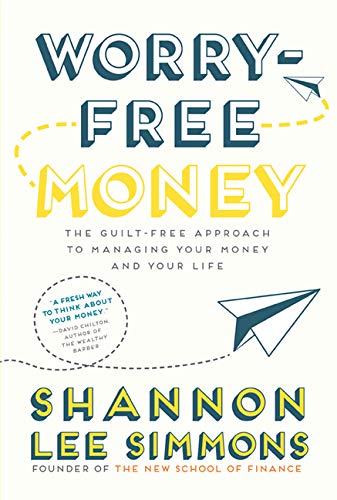
We finally move into books that offer deep insights into personal finance. Worry-Free Money by Shannon Lee Simmons takes a unique approach to this field. She covers a variety of topics in this 328-page book, including savings, budgeting, and spending. Shannon wants you to stop feeling sorry and to take control of your finances.
The book has proven to be a great read and has a 4.3 rating on Goodreads. Her practical approach speaks to the limitations of her audiences as she creates a doable approach to improving one’s finances. You will find a lot of real-world examples in the book.
Worry-Free Money does a great job of helping people realize the impact of their day-to-day decisions and how to change. The tone remains friendly yet stringent.
11. Beat The Bank: The Canadian Guide to Simply Successful Investing
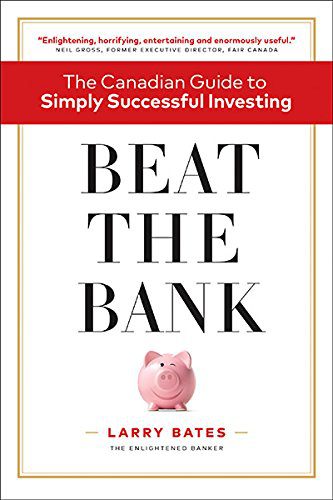
Find it hard to invest your money? Larry Bates’s Beat the Bank can help you understand investments better . This 208-page book came out in 2018 and is already one of the most popular personal finance books in Canada with a score of 4.4 on Goodreads. The book discusses some technical topics but without using technical or complicated language.
Larry has done a good job of explaining the concept of indexing, its benefits and why some investments may not suit Canadians due to high investment fees. He provides great tips on simplifying and optimizing investment portfolios, increasing wealth and maximizing tax-sheltered accounts.
Larry focuses on long-term growth for readers who serious about investing from big shots to small investors. You don’t need a lot of money to follow Larry’s instructions. He has even included tools like T-Rex Score, so investors know exactly how much they have to pay in fees.
12. Moolala: Why Smart People Do Dumb Things With Their Money – And What You Can Do About It
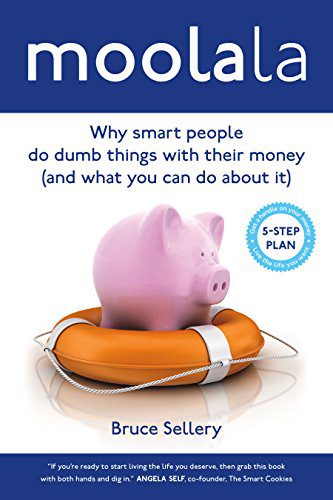
Written by Bruce Sellery, the Moolala personal finance book has a 3.5-score on Goodreads. Divided into five sections, this 2011 book is written in an inspirational manner. At 342 pages, the author makes it funny and interesting to read.
It will help you look at money management from a new perspective thanks to practical examples and simple language. For instance, short activities at the end of each chapter help you gauge what you’ve learned. This section can also help readers understand the mistakes they make and what they can do to improve.
Take your time and don’t just glance over this personal finance guide for Canadians. It has excellent material that you should grasp fully before turning the page.
13. Victory Lap Retirement: Work While You Play, Play While You Work

Victory Lap Retirement by Mike Drak et al speaks to people who want to retire peacefully. Published in 2019, this 232-page book has a score of 3.7 on Goodreads and a growing fan base. Drak’s name has made this book popular.
The author has some other titles under his belt and has contributed to popular publications like Yahoo Finance and MoneySense. He understands the issues people face and wants to solve them with this book. You will find it very light to read and full of real-life examples.
While the text gets a little repetitive in places, it does a good job of highlighting how one can retire without any burden. It’s written for people close to retiring. Afterward, we feel you should start planning for retirement as early as possible so get your hands on this one now.
14. The Year of Less: How I Stopped Shopping, Gave Away My Belongings, and Discovered Life is Worth More Than Anything You Can Buy in a Store

Cait Flanders wrote The Year of Less to share her experiences with readers and help them understand the true meaning of life. More than a personal finance book, this guide can give your life a new meaning. The book does a good job of highlighting the importance of appreciating the small things.
Written as a self-help memoir, the book chronicles the life of Cait and how a 12-month break from routine life helped her discover the beauty of life. Basically, her story covers the struggles of a 20-something-year-old girl dealing with alcoholism, weight gain, career, family, etc. We must mention that you will enjoy this only if you like to read memoirs.
Published in 2019, this 216-page book has a rating of 3.5 on Goodreads and some very positive feedback from readers. Most seem to enjoy the tone and we also fell in love with the way Flanders presents her story.
15. House Poor No More: 9 Steps That Grow the Value of Your Home and Net Worth

House Poor No More by Romana King might not stand out as the most popular book out there but it is still worth a read. Published in 2021, the book is quickly gaining momentum. This 440-page guide talks about different aspects of buying, selling or investing in real estate in a clever manner.
Above all, we liked how it doesn’t only talk only about homeownership but also how it links to retirement planning and money management. It has some great tips on what you can do to boost your home’s value and maintain it. You’ll find information on reducing monthly expenses and taking advantage of debt.
Further, Romana makes some very new and interesting points in this book. She explains each point in detail, especially the eye-opening managing chapter. Finally, she does a good job of explaining the cost of owning a house and how small changes can help you save money.
16. The Rule of 30: A Better Way to Save for Retirement

Written by award-winning columnist Frederick Vettes, The Rule of 30 offers some great and new ways to save money for retirement. This 224-page book calls out the mindset that our demands change and saving strategies need to adapt as well. Written for Canadians under 45, the book emphasises the importance of saving throughout life so that we can have decent savings when we decide to hang our boots.
Vettes’ formula states you should save different amounts throughout the years instead of a constant and arbitrary amount. He gives a simple rule – save 30 percent of your gross income, minus rent or mortgage and short-term expenses, such as daycare. With this formula, you’ll save less in the beginning and more as years pass.
Just like The Wealthy Barber, this reads in a novelistic manner and in the form of conversations between a number of people. While not everyone appreciates this approach, it works in this context.
17. The Money Master: Inside Secrets on How to Make Your Money Grow and Stay Safe: What They Don’t Teach You about Wealth and Investing

Sandy Yong’s award-winning The Money Master targets people who get anxious just thinking about money. If you let emotions control you, then get your hands on this book. It has a great section on how to keep your sentiments in check.
Reviews of the book positively glow and most readers seem to have found the tips in the book quite easy to follow. Published in 2020, it only has 161 pages. Described as crisp, the author seems to have made every word count. However, we liked its clear presentation most .
Yong has done a good job of presenting the book in workbook form. However, it remains full of wise advice as the author gets straight to the point without mincing words, especially during the rich-versus-poor people section. We suggest that you concentrate on this valuable information.
18. Happy Go Money: Spend Smart, Save Right and Enjoy Life
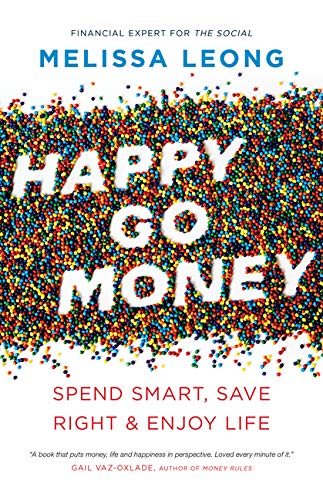
Published in 2019, you can consider Happy Go Money by Melissa Leong a complete personal finance guide as it talks about everything from saving to investing. Leong works as a personal finance writer, on-air personality and keynote speaker with a good understanding of the Canadian market. Unlike some other personal finance books in Canada for a specific age group, anyone can benefit from its material.
The book contains some brilliant one liners and anecdotes. Leong doesn’t hesitate about sharing some jarring details of her life. Most importantly, she encourages self-evaluation without getting dry.
Spend some time thinking about your financial situation and what you can change to improve your life. Next, look at things from Leong’s perspective. You don’t have to follow everything given in the book, but try to concentrate on points that apply to you.
19. Personal Finance for Canadians for Dummies
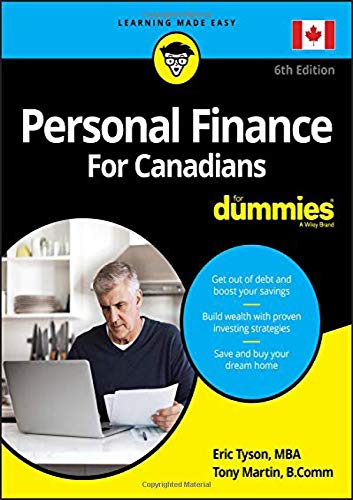
Published in 2018, Personal Finance for Canadians for Dummies authored by Tony Martin and Eric Tyson remains one of the most popular personal finance books in Canada. Some books written by two authors can offer two different styles, but we loved how this book came together.
Both Martin and Tyson share the same aim – to educate people – with an interesing result. This 400-plus page book will give you interesting perspectives and make you think about your financial situation. The duo recently updated it to cover the latest trends, including robo-advisors.
While the book has much detail, remember it only suits self-proclaimed dummies. If you already understand personal finance in Canada then this book might not be for you. However, you can choose any other book from this list.
20. Easy Tax Tips For Canadians: Book One of the Piggy Bank Financial Series
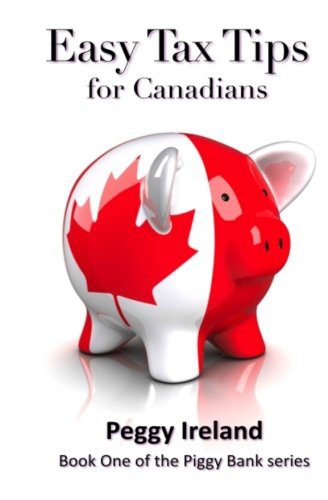
Easy Tax Tips For Canadians by Peggy Ireland makes a great pick for anyone wanting to know more about the Canadian tax system and how you can save money. Everyone pays taxes, from the rich to the poor, and this book speaks to all kinds of readers. You’ll enjoy Peggy’s real examples and creative tips.
This book will help you determine what to buy, when to buy, how to buy and how much to buy to ensure you don’t end up overpaying taxes. After all, taxes in Canada can even go above 40 percent in some cases.
Rather than focusing on tax stealing, it helps find loopholes by acting smart, just like chartered accountants do. However, we suggest that you read some other books in this list before moving to this one. It can become a little complicated to understand. Also, not all situations may apply to you, so look for sections that relate to your case.
21. A Wealth of Common Sense: Why Simplicity Trumps Complexity in Any Investment Plan
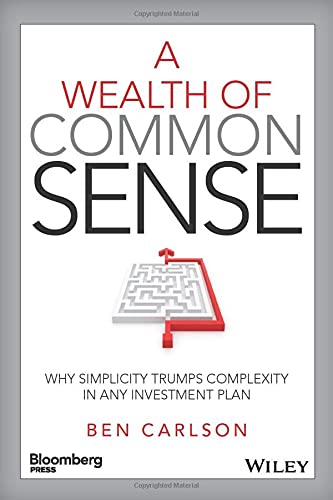
Those who want something simple but interesting can get their hands on A Wealth of Common Sense by Ben Carlson. With a Goodreads score of 4, we think this book makes a good pick for anyone wanting to know more about saving money. It will not make you rich overnight as this book doessn’t focus on quick cash. Instead, it delves into smart investing in the right scheme.
It can be a little hard to follow all the principles given in this book, but give it a try. The tone gets a little stiff in parts but it works. Carlson has used complex language in some places that we found a little unnerving but he uses some nice examples throughout the book to make his point.
22. RICH GIRL, BROKE GIRL

Rich Girl, Broke Girl stands out as attractive and interesting as the title. Author Kelley Keehn has done a good job of explaining how to pay your debt and start saving in this narrative-style book. The book resonates with parents who want to teach their kids financial independence.
It covers issues we face in our day-to-day life, such as negotiating salaries, gaining control of our finances, etc. The author stays sympathetic and supportive. We loved the anecdotes in this book as they hit the bull’s eye every time.
Keehn appears observant and has layered the book with Canadian examples that make it even more relevant. Consider showing it to growing children. It can help them start their life on the right note.
23. The RESP Book: The Simple Guide to Registered Education Savings Plans for Canadians
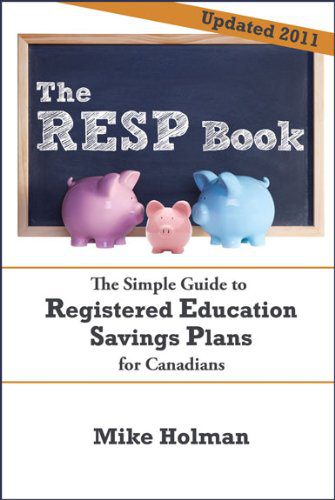
Mike Holman’s top-rated The RESP Book originally came out in 2012 and explains Registered Education Savings Plan (RESP) in just 155 pages. It’s speaks to Canadian parents with a whip-smart approach. We loved the chapter where he talks about RESP accounts and how to get started.
Most people love the tone and how easily they grasp the material. Ideally, get a copy for people who just had kids or plan to have kids. It covers everything one needs to know from how to fund their education to what kinds of expenses to expect. Getting prepared will help you, so give this a read.
24. The Snowman’s Guide to Personal Finance: A simple approach to managing your money
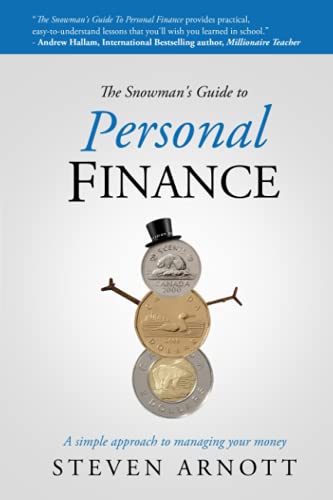
The Snowman’s Guide to Personal Finance by Steven Arnott is a fairly new option but already very popular. This 184-page book came out with its practical approach in 2019. It suits anyone interested in developing a baseline knowledge across different personal finance topics, including home ownership, debt settlement and retirement.
Arnott has done a clever job of using the snowman to explain different personal finance concepts in this book. This makes the presentation interesting and keeps readers glued. Of course, this helps since personal finance can end up boring some readers. Arnott has kept the tone educational but simple.
In addition, the layout is excellent. It starts from the basics and goes deeper as you continue to read. Arnott has used some interesting analogies and the concrete examples throughout the book. However, it might not offer insights to people who already understand the basics.
25. Financial Freedom With Real Estate: Start Making Money Today Because Everyone Else Is

Real estate is one of the most important parts of financial freedom and Michael Steven does a good job of explaining its importance in Financial Freedom with Real Estate. Steven knows the industry very well and boldly shares his experiences. He makes some very important points, including the need to start today.
We loved how the book busts several myths about real estate and encourages readers to start investing. It makes real estate looks easy and provides step-by-step guides on how to get started. He has very clearly selected chapters’ topics so they flow smoothly.
Written during the COVID era, this 128-page book takes into consideration the ongoing issues that we face today. But, the tips contained in this book will help you in the future as well.
26. Do You Really Need It?: One Question to Free You Financially

Written by Pierre-Yves McSween, this 336-page personal finance book highlights the value of saving. Do You Really Need It? does a very good job of helping users realize the importance of saying no and thinking before making a purchase. McSween understands that many of us end up making unnecessary purchases and stopping at the right time ultimately saves money.
Many books on this topic but this one apart stands out for how positively it makes the point. It holds up a mirror to one’s life choices and their consequences. Further, it looks at things from the perspective of a common man and paints an encouraging picture.
You will even find real-life examples in the book that come across as both interesting and relevant. We suggest picking important pointers from each chapter and making a list so you have it handy. Overall, the book tells readers to start out as slowly as they can since saving something is better than saving nothing.
27. Simple Money: Turn your dreams into reality

Greg Tomkins wrote Simple Money with one goal – to help people manage money. Published in 2021, this new addition to the long growing list of personal finance books in Canada does a fine job of connecting with the readers. At 321 pages long, the book details and highlights how one can move forward in life.
Tomkins has created a formula that he has used to find success and believes that it can help others as well. The trick lies in working today for tomorrow. The language comes out straightforward and clear, as the writer hits all the points from retirement to debt to ways to earn money.
The book contains dozens of case studies, including Greg’s stories of failures and triumphs. We loved the section where he talks about financial jargon and gets deep into stocks and portfolio management. We feel this book perfectly suits all types of readers, including new and experienced investors.
28. Investing For Canadians All-in-One For Dummies
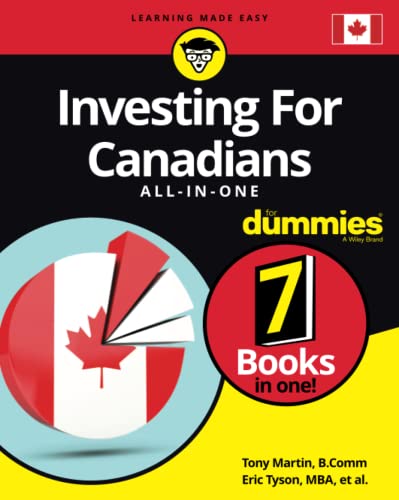
Investing For Canadians All-in-One For Dummies by Tony Martin ranks as one of the best personal finance books. It talks about some new concepts that feel pretty fresh and written for tomorrow’s investors. You’ll find topics such as cryptocurrencies, precious metals and taxes.
The book gets marketed as a seven-in-one series that covers some other topics as well, including day trading, real estate and mutual funds. Hence, it doesn’t come as a surprise that it’s pretty long at 592 pages. But, don’t worry. The book flows well and you will not get tired of it.
While some portions get pretty detailed, some are only introductory. We loved the section where the writer highlights the importance of finding investments according to your income and following time-tested strategies.
29. The Value of Simple: A Practical Guide to Taking the Complexity Out of Investing

John A Robertson has created a number of books and enjoys an excellent reputation today. However, if we had to pick his best, we’d choose The Value of Simple. After all, he wrote it for people who find investing too complex and made the topic interesting.
Robertson understands the issues investors face and lays out a clear plan on how to grasp the evolving market. He explains different concepts in simple words within 220 pages. You’ll even find some information on real estate and retirement.
You’ll love this book if you’re busy since Robertson doesn’t expect you to spend hours in front of your phone or computer. The book helps you invest while you concentrate on other things. You’ll find a detailed step-by-step guide on how to create and manage a portfolio. We loved how complete the book is. Once you’re through this, you can confidently strengthen your finances.
30. Reboot Your Portfolio: 9 Steps to Successful Investing with ETFs
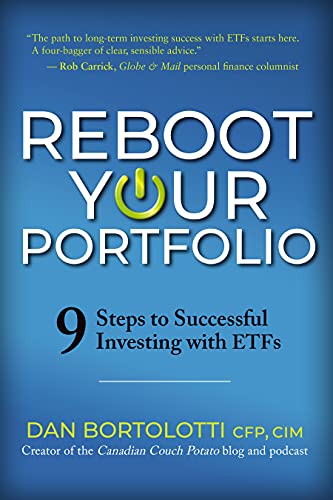
EFTs became quite popular in Canada and can help you make a lot of money. Thankfully, Dan Bortolotti does a fine job of explaining their complexity in Reboot Your Portfolio. It starts by highlighting the benefits of ETFs. Dan explains their benefits and why you should concentrate on exchange-traded fund (ETFs) and not beating the market.
If you are already understand ETFs then you can move to the second step where the author explains their portfolios and how you can allocate assets, select funds, etc. We loved the language he has used. It makes concepts easy to understand.
Dan has included some great examples here. We think the book can guide existing ETF investors as well. It has some great tips on how to avoid mistakes and you can use these tips to improve your current portfolio.
31. The Canadian Real Estate Investing Blueprint: The Exact Strategies Canadians Have Used to Buy and Profit From Billions in Income Property
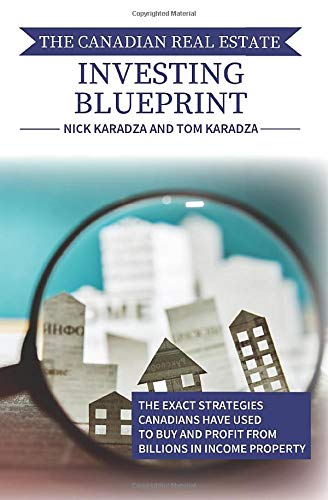
Written by Tom and Nick Karadza, The Canadian Real Estate Investing Blueprint remains one of the best personal finance books. It mainly focuses on real estate investment in a series as you meet the authors and how they have achieved great results.
You will find the duo’s investing secrets in the book. We liked how specific they got here with real examples. In our favourite chapter, they talk about different real estate investment options and the benefits of each.
This 338-page book goes in-depth and provides some great ways to compare different options. Once you get through this, you will be in a position to call the shots and identify the best real estate investment by comparing potential returns.
32. Balance: How to Invest and Spend for Happiness, Health, and Wealth

Another book by the author of the Millionnaire Teacher? Yes, Andrew Hallam shares his knowledge once again. Fans of the millionnaire teacher will also appreciate this one. If you ever feels like the pursuit of wealth deprives you of life’s pleasures, Balance might help you get a better balance between money, connection, health, and purpose.
The book offers insights into achieving financial independence through a balanced approach to investing, focusing on principles like diversification, low-cost investing, and long-term wealth building. Hallam’s writing style is accessible, making complex financial concepts understandable to a wide audience.
Instead on focusing on savings and investments, you’ll learn to optimize your income. This means that your ultimate goal is to increase your happiness. For instance, you might decide to budget to put money towards what you hold most dear and invest in socially responsible funds in order to live according to your values.
33. The Simple Path to Wealth: Your road map to financial independence and a rich, free life

Today he’s a financial blogger but J. L. Collins has had dozens of jobs in his life. He’s gone from busboy, dishwasher, grocery bagger and gas station pump jockey to tree-trimmer, ad agency founder, ad space salesman, consultant, speaker, writer, radio talk show host and magazine publisher. He has a lot of experience to share with us.
Collins’ purpose is to prevent you from falling into the clutches of advisors who claim that investing is complex because they make money on the idea. The more you worry about this complexity, the more you put your money in their hands. But it’s not true that investing is complex. Discussing money with his daughter helped him craft a simple approach, explained in The Simple Path to Wealth, that you can implement too.
The book addresses how to manage debt, the importance of fuck you money, and simple investing advice coupled with information to understand the stock market. Of course, since he is American, you’ll see stuff about IRA and Roth accounts – that you can skip. He has a lot to say, for instance about dollar-cost averaging, which he does not encourage. Basically, he says it works if the market drops, but there’s only a 23% chance of this happening.
34. The Psychology of Money: Timeless lessons on wealth, greed, and happiness

Morgan Housel is an American author and also a partner at The Collaborative Fund. When it comes to investing, psychology is key. That’s probably why his book The Psychology of Money sold over 5 million copies. In this book, the author shares 19 short stories. You’ll learn how different people think about money. Hopefully, some of the stories will inspire you to make better financial decisions.
In this book, Housel delves into the psychological aspects of money management, emphasizing that financial success isn’t solely determined by intelligence or knowledge of markets, but rather by understanding and managing one’s behavior. He highlights the significance of time in accumulating wealth, illustrating how patience and long-term thinking are crucial for financial success. Compounding is a central theme, illustrating how even small, consistent actions over time can lead to significant wealth accumulation. He also explores common emotional biases that can hinder financial success, such as fear, greed, and overconfidence, as well as the importance of adaptability in the face of changing circumstances.
35. I Will Teach You to Be Rich: No Guilt. No Excuses. Just a 6-Week Program That Works

If you’re into programs that ask you to complete steps, this book will be a great source of change for your financial life. I Will Teach You to Be Rich was written by Ramit Sethi, the host of Netflix’s How to Get Rich. In the second edition of the book, the author added stories relating how previous readers used the book to get rich.
Ramit Sethi tackles all the basics of personal finance: Tips to reimburse debts, including student loans, to talk your way out of late fees, negogiate a raise, buy a car, a house or make another big expense without too much stress, etc. The book also explains how to set up no-fee, high-interest savings accounts and what strategy to implement for your investments. You’ll even learn Ramit’s strategy to automate his finances.
36. Die With Zero: Getting All You Can from Your Money and Your Life

Bill Perkins, a hedge fund manager, shakes up old ideas about money. He is also a Hollywood film producer, and poker player, among other things. Most financially savvy people will tell you to save and invest as much as you can, but not him. The book is based on the premise that you might be over-saving and under-living. From there, the author of Die With Zero comes up with new concepts such as “fulfillment curve” and “personal interest rate”.
This book will help you maximize your positive life experiences. Those experiences will not be the same if you are 20 years old or 50. The balance of health, money, and free time will change over time. To live a fulfilling life, he suggests to trade an abundance of one (such as money) to attain more of the other two. Basically, this means he encourages you to have a higher spending-to-saving ratio when you’re young and old. Those are typically the leaner years of your life, and you would be borrowing money from years of abundance. This way, you’ll create “memory dividends”.
37. 5 Years to Freedom: A Canadian Guide to Early Retirement

Rejean Venne retired at 29 years old. He and his wife exchanged their high-paying jobs and big city lifestyle for retirement in a small community in Ontario. Their story sets an example for anyone willing to retire early.
His book 5 Years to Freedom tells the details of this story. He addresses why he and his wife decided to aim for FIRE and how they adapted their spending and savings to be able to do so while raising three children. You’ll learn how they sold their big house to aim for a cheaper one, and did the same with their car. By staying at home, they saved on groceries, childcare, and some other expenses. They also decided to buy income properties and renovate them, then resell them when the market is favourable.
38. Your Money or Your Life: 9 Steps to Transforming Your Relationship with Money and Achieving Financial Independence

Your Money or Your Life, by Vicki Robin and Joe Dominguez with a foreword by Mr. Money Mustache, is a seminal book in the realm of personal finance and self-help. The book encourages readers to reconsider their relationship with money, viewing it not just as a means of consumption but as a tool for achieving financial independence and fulfillment. It advocates for meticulous tracking of expenses to gain a clear understanding of where money is being spent and to identify areas for potential savings. It provides practical advice on investing and saving money, advocating for strategies like index fund investing and creating a financial independence fund that generates passive income.
The authors also introduce innovative concepts like the “real hourly wage,” which factors in not just the monetary earnings but also the time and resources expended in earning and spending money. This will help you evaluate the true value of your time and make more informed financial decisions.
The ultimate goal of Vicki Robin (author) and Joe Dominguez (retired financial analyst) is to help readers achieve financial independence. The authors are American, but the principles outlined in the book are timeless and applicable regardless of one’s situation.
39. The Richest Man in Babylon

The Richest Man in Babylon is a classic personal finance book written by George S. Clason and first published in 1926. George S. Clason was an American businessman who lived from 1874 to 1957. Clason was born in Louisiana and later moved to Missouri, where he worked in the publishing industry. Despite its age, the book’s timeless principles continue to resonate with readers today.
The book is structured as a collection of parables set in ancient Babylon, each conveying a specific financial lesson. One of the central teachings of the book is the “Seven Cures for a Lean Purse,” which are seven principles for achieving financial success. These include simple yet powerful concepts such as living below your means, saving a portion of your income, and investing wisely.
Clason’s use of storytelling makes the book engaging and accessible to readers of all ages and backgrounds. The characters in the book learn valuable lessons about money management through their own experiences and the guidance of wise mentors. Despite being set in ancient times, the lessons are applicable to modern-day financial challenges.
40. Think And Grow Rich

This is another classic book, written by Napoleon Hill and first published in 1937. Born in 1883, Napoleon Hill was an American author and self-help guru. He is widely considered one of the pioneers of the self-help genre. Hill spent many years studying successful individuals, including industrialists, entrepreneurs, and politicians, in an effort to distill the principles of success.
Think and Grow Rich is based on the philosophy that success is not a matter of luck or circumstance, but rather the result of specific mindset and actions. Hill outlines a set of principles, which he refers to as the “Philosophy of Achievement,” that individuals can apply to achieve their goals and attain wealth and success. Central to Hill’s philosophy is the belief in the power of thought to shape one’s reality. He emphasizes the importance of having a burning desire for one’s goals, maintaining unwavering faith in their attainment, and taking persistent action towards their realization. He encourages readers to clearly define their goals, visualize their attainment, and take consistent action towards their realization.
